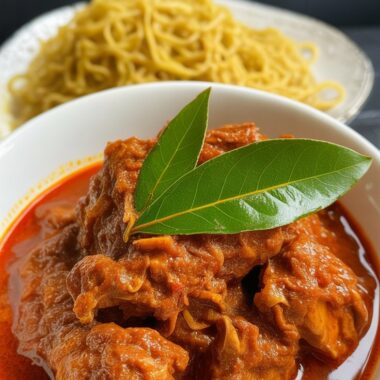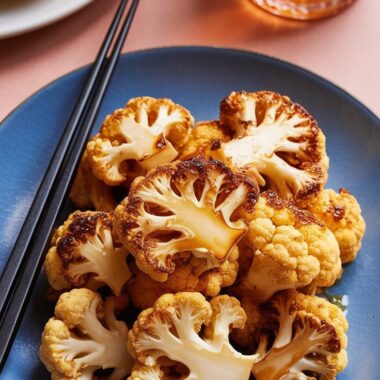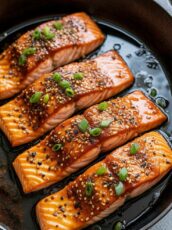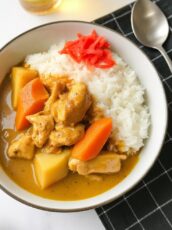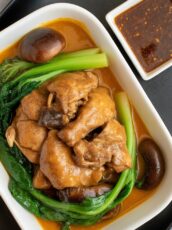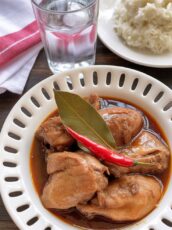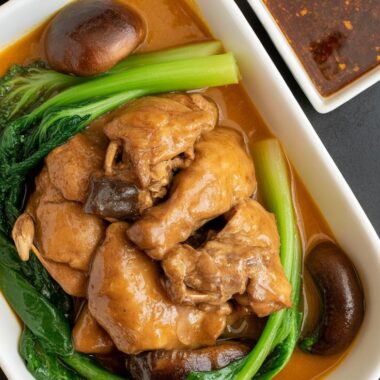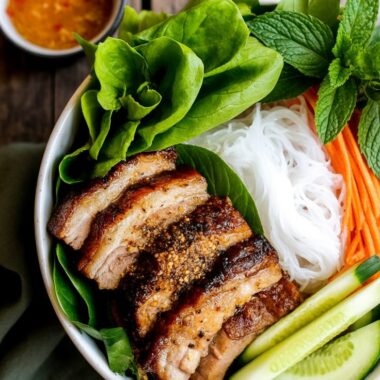There’s something incredibly soothing about a steaming bowl of peppery pork rib soup, especially when the weather decides to be moody. This Singaporean-style Bak Kut Teh is bold with white pepper, rich with garlic, and comforting in a way that feels like a warm hug from the inside.
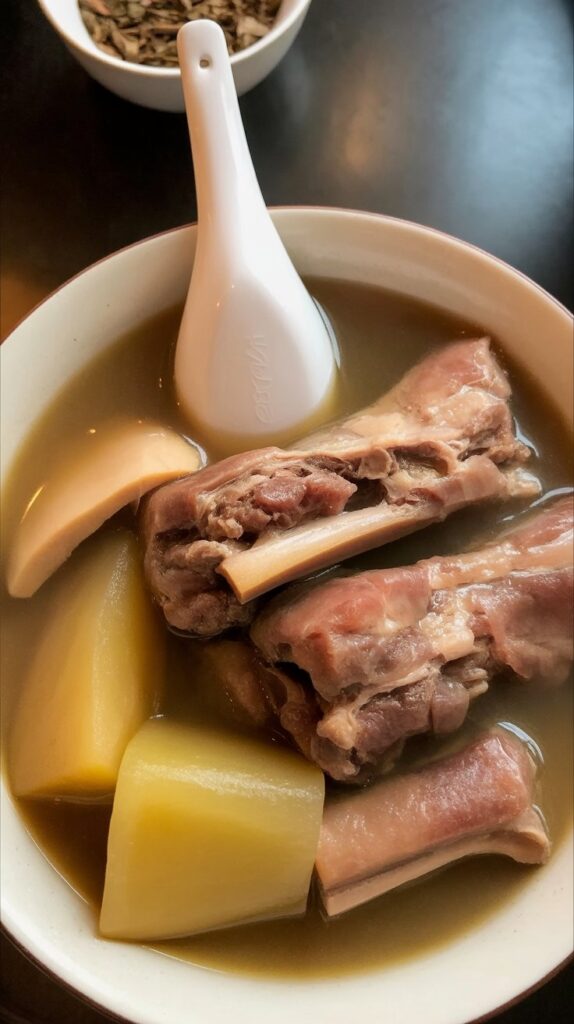
The name might translate to “meat bone tea,” but don’t go looking for any actual tea leaves in the broth — the “tea” part comes from sipping hot oolong alongside the soup to balance the richness. And let me tell you, that pairing is something I didn’t know I needed until I had my first taste in a little kopitiam in Singapore.
Why This Soup Hits the Spot Every Single Time
What I love about this version of Bak Kut Teh is its simplicity and punch. It’s not heavy with herbs like the Malaysian-style one, but that doesn’t make it any less flavorful. It’s the kind of dish that clears your sinuses, fills your belly, and lingers in your memory — all in the best ways.
Whenever I make this at home, it instantly takes me back to a tiny spot in Clarke Quay, where the broth was endlessly refillable, and the ribs fell off the bone with the gentlest nudge of a chopstick. These days, when flying to Singapore isn’t on the cards, I simmer a pot on the stove and pretend I’m back there, dodging rain and slurping soup under an awning.
What You’ll Need for the Perfect Bowl
The ingredient list is refreshingly short. And most of it is pantry-friendly, especially if you cook Asian food now and then.
- Meaty pork ribs – Go for the ones with a good balance of fat and meat. The fattier ones make the broth richer, but you can always skim off extra fat later.
- Whole white peppercorns – This is the star of the show. It’s what gives the soup that signature floral heat. Don’t use ground pepper — it just won’t be the same.
- Garlic – A lot of it. I don’t peel them; it’s just not worth the hassle, and the skins actually mellow the garlic a bit during simmering.
If you like a bit of contrast, you can toss in a few black peppercorns too — but just a sprinkle. Too much, and the soup leans more toward bitter than spicy.
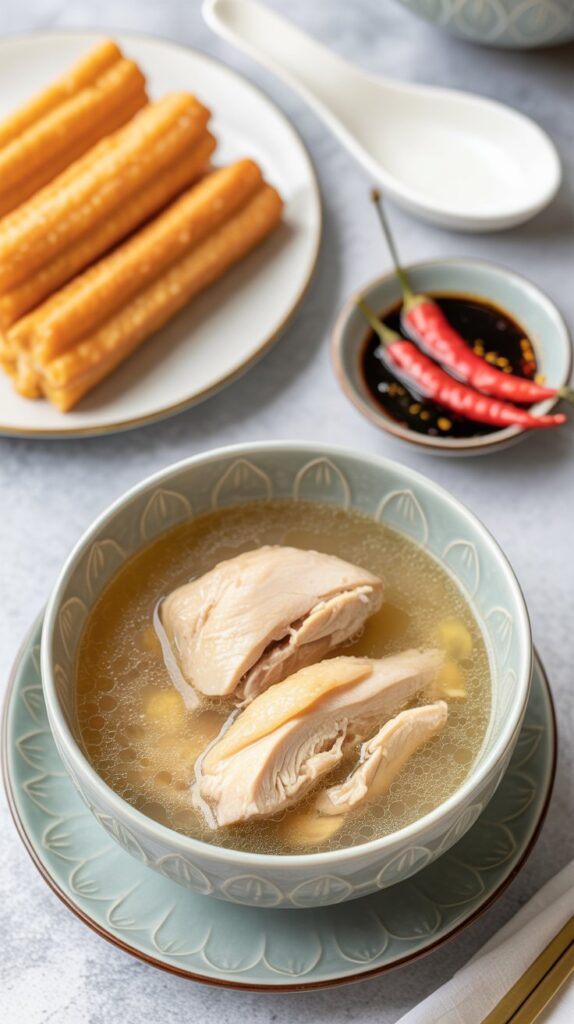
A Note About White Peppercorns
If you’re new to white pepper, start a little cautiously. It hits differently than black pepper — more floral, more upfront heat. I remember the first time I overdid it — I was coughing halfway through my first spoonful. Since then, I’ve learned to balance it better.
You’ll probably need to check your local Asian grocery or order online. Whole white peppercorns are not something most big-box grocery stores keep in stock.
Serve It the Singapore Way (Trust Me, It’s Worth It)
A bowl of this soup is fantastic on its own, but to really make it feel complete:
- Steamed rice – You’ll want something to soak up the broth.
- Youtiao (Chinese fried dough) – This is non-negotiable in my kitchen. I keep some in the freezer. Just warm them up in the oven at 400°F until crisp and golden. They soak up the broth like little sponges of joy.
- Oolong tea – Helps cut through the richness and makes the whole experience feel just right.
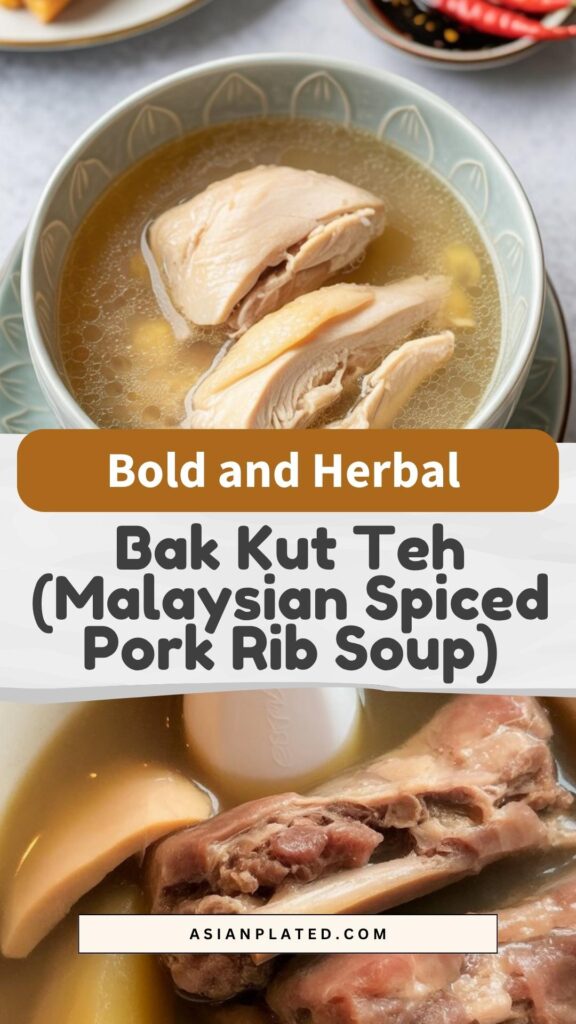
Step-by-Step: How I Cook It at Home
Here’s how I pull together a batch when I’m craving a hot, peppery bowl:
- Crack the Peppercorns
I usually grab a mortar and pestle for this. But when I’m lazy (which is often), I toss the peppercorns in a zip-top bag and smack them with a rolling pin. Don’t grind them into powder — just enough to release their oils. - Toast for Extra Aroma (Optional)
I’ll admit, I sometimes skip this when I’m short on time, but toasting the garlic and peppercorns in a dry pan for a minute or two really amps up the flavor. Worth it if you can spare the effort. - Parboil the Ribs
This step helps keep the broth clear. I give the ribs a quick 5-minute boil, then rinse off any scum before moving to the final simmer. - Simmer Everything Together
I throw the parboiled ribs, garlic, and peppercorns into a pot, cover with water, and simmer low and slow until the meat is fall-apart tender. Usually takes about 45–60 minutes. - Season to Taste
Add salt right at the end. Taste the broth before seasoning — sometimes the pepper gives enough depth that you don’t need much.
A Few Cooking Tips From My Kitchen
- Skim the fat if you like a lighter broth. I usually let the soup sit for 10 minutes after simmering and then scoop off the fat layer.
- Make a big batch. This soup tastes even better the next day. The flavors mellow out and deepen.
- Use pork neck bones or a mix of rib and bone-in shoulder for variety. More bone = more flavor.
Can You Make It Ahead? Absolutely.
Bak Kut Teh actually tastes richer after a night in the fridge. It’s one of those dishes that benefits from a bit of rest — kind of like curry or chili. If I’m hosting or just prepping ahead for a busy week, I make it the day before and gently reheat it the next day.
You can store it in an airtight container in the fridge for up to 3 days. Just reheat on the stove over low heat. It freezes decently too — though I usually don’t have any left to freeze.
How I Usually Serve It
This soup makes for a cozy dinner on its own, but I love serving it with:
- Steamed jasmine rice
- A small plate of chopped red chilies in soy sauce for dipping the pork
- Oolong tea in a tiny teapot — makes it feel a bit special
- Blanched greens (like choy sum or bok choy) if I want to round out the meal
When I’m feeling indulgent, I’ll add a side of tofu skin or boiled peanuts, just like they do in some Singaporean hawker stalls.
Storage Tips That Work
Let the soup cool completely before storing. I strain the broth and store it separately from the ribs to avoid overcooking the meat during reheating.
Fridge: Keeps well for 2–3 days.
Freezer: Up to 2 months, though the garlic gets a little softer in texture after thawing. Still tastes great.
Bak Kut Teh (Malaysian Spiced Pork Rib Soup)

This Singapore-style Bak Kut Teh is the kind of soup that wraps you in comfort. It’s clear, peppery, and deeply fragrant—built on tender pork ribs, garlic, and plenty of crushed white peppercorns
Ingredients
- 2 lbs meaty pork ribs, separated
- 6 cups water
- 2 oz garlic bulbs (around 20 whole cloves, unpeeled)
- 1.25 oz white peppercorns (about 1/4 cup + 2 tsp)
- 0.15 oz black peppercorns (about 2 tsp) – optional for extra kick
- 2 teaspoons salt (or to taste)
Instructions
- Start by rinsing the whole garlic bulbs and trimming off their bases—no peeling needed. Lightly crush the peppercorns using a mortar and pestle, or simply seal them in a zip-top bag and crack them with something heavy like a rolling pin. It’s perfectly okay if some remain whole.
- In a dry skillet over medium-low heat, toast the crushed peppercorns along with the garlic for a few minutes until the aroma starts to rise. Set aside.
- Meanwhile, bring a large pot of water to a boil. Add the pork ribs along with a pinch of salt. Let it boil again and blanch the ribs for about 1–2 minutes. Drain the water and give the ribs a quick rinse to get rid of any scum.
- Clean the pot or grab a fresh one. Add the blanched ribs, 6 cups of clean water, and about ½ teaspoon of salt. Bring it up to a boil, then lower the heat to maintain a gentle simmer. Skim off any foam that rises to the surface.
- Now toss in the toasted peppercorns and garlic. Partially cover the pot—just leave a small gap for steam to escape—and let it gently simmer away for around 90 minutes, or until the pork becomes fall-off-the-bone tender.
- Taste and adjust with more salt if needed. The broth should be peppery, rich, and soul-soothing.
- Ladle the hot soup over steamed jasmine rice, and if you can get your hands on youtiao (Chinese fried dough sticks), they’re perfect for dipping. Round it out with soy sauce and bird’s-eye chili on the side, and sip on hot oolong tea to cut through the richness.
Notes
- Not sure how much heat you can handle? You can reduce the white pepper to 1 oz and skip the black pepper entirely for a milder version. The full amount makes it pretty fiery—but that’s part of the charm!
Nutrition Information:
Yield: 4 Serving Size: 1Amount Per Serving: Calories: 865Total Fat: 70gSaturated Fat: 21gTrans Fat: 1gUnsaturated Fat: 31gCholesterol: 238mgSodium: 1282mgCarbohydrates: 11gFiber: 3gSugar: 0gProtein: 49g
Asianplated.com, occasionally offers nutritional information for recipes contained on this site. This information is provided as a courtesy and is an estimate only. This information comes from online calculators. Although allchickenrecipes.com attempts to provide accurate nutritional information, these figures are only estimates.
Questions You Might Have
Can I use ground white pepper instead of whole?
Nope — ground white pepper will make the broth cloudy and gritty. Whole peppercorns are key here.
Can I make this in a pressure cooker?
Yes, and it’s faster too. About 20–25 minutes under pressure should do it. Just reduce the peppercorns slightly, as the pressure intensifies their flavor.
Is it spicy?
It’s more of a warming heat than a chili burn. If you’re sensitive to spice, use fewer peppercorns and add more later if needed.
Let me know if you try it — especially if it becomes your go-to comfort soup like it did for me. There’s just something about a peppery broth and tender ribs that never gets old.
Try other Malaysian recipes:

